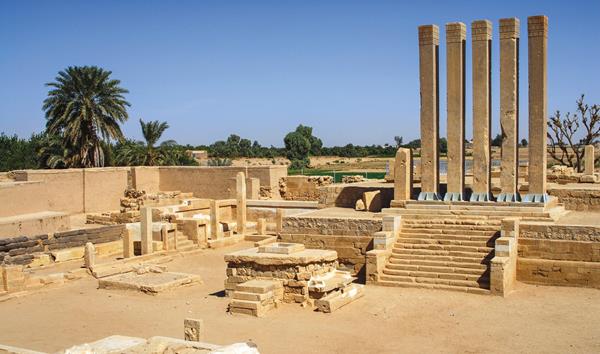
Marib, the capital of the ancient South Arabian kingdom of Saba and home to the legendary Queen of Sheba, now finds itself on the front lines of one of today’s most protracted and devastating conflicts, the Yemeni civil war. The roughly 60-acre site, which includes the towering remains of monumental pillared temples and one of the ancient world’s largest dams, is just miles away from the modern city of Marib, an oil-rich provincial center that has emerged as a pivotal flash point in Yemen’s nearly decade-old war between Houthi rebels and internationally backed government forces.
Inhabited since at least the mid-second millennium BCE, Marib rose to prominence in the early first millennium BCE as the capital of the Sabeans, a powerful and wealthy kingdom that controlled access to South Arabia’s valuable incense trade—the likely reason for the Queen of Sheba’s visit to Jerusalem in 1 Kings 10. Though poorly known to history (and archaeology), the Sabean capital features several unique and well-preserved religious complexes, including the seventh-century BCE Bar’an Temple dedicated to the South Arabian god Almaqah and distinguished by its six giant, monolithic pillars (one broken) that guarded the grand peristyle entrance to its elevated podium and sanctuary. Marib was also renowned for its Great Dam—the remains of which still stand some 20 feet tall and extend several hundred feet—that channeled powerful seasonal flood waters onto expansive fields and gardens that made Marib a flourishing desert oasis for more than two millennia.
Already a library member? Log in here.
Institution user? Log in with your IP address.

